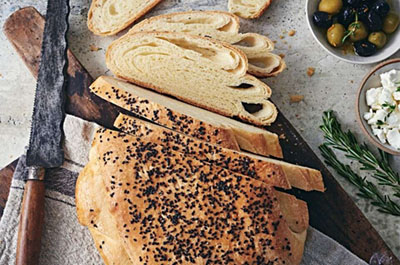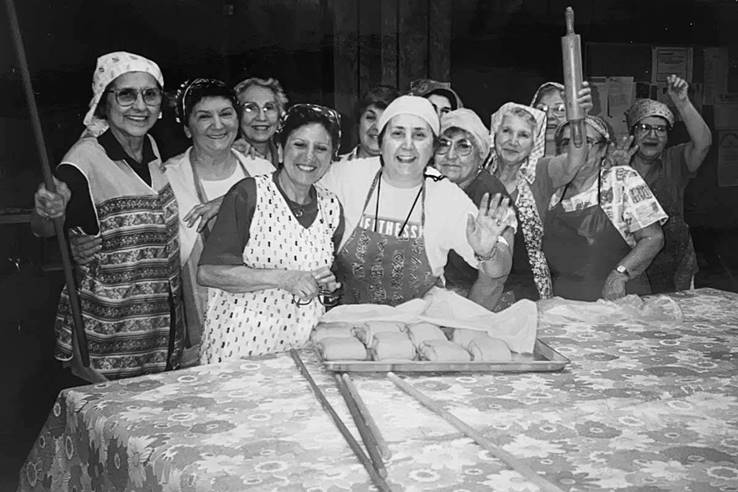A classic bread frequently baked in Armenian American communities, katah is sometimes referred to as an “Armenian croissant.” It’s flaky, tender, and enriched with plenty of butter. This particular version is inspired by a recipe that was shared with us by a member of our baking community, Tali Gelenian. Tali learned to bake katah at the St. Hagop Armenian Apostolic Church in Racine, Wis., where once a year the bread is made in great quantities for the annual Madagh Armenian picnic. As Tali writes in her blog, this is just one rendition of katah, and in fact there are many more versions found throughout the Caucasus, sometimes under different names.
Breaking Bread with Armenian Katah: A Story of Community, Celebration, and Resilience
By Tali Gelenian
Food builds community. Anyone who loves to cook or bake knows that a shared meal has the unique ability to bring people together. For my Armenian family, the act of “breaking bread” is embodied in a special tradition: the Madagh Armenian Picnic.
With origins in the church, “madagh” means “offering” or “sacrifice” and refers to the story of Abraham and Isaac in the Book of Genesis. Madagh is also what Armenians have named the stew that is prepared for the event, traditionally made with lamb to represent the ram that God asked Abraham to offer in the place of his son, Isaac. The madagh stew is cooked over open-fire pits and provided for free by the church in the spirit of charity, good faith, and fellowship to all.
For over 80 years, St. Hagop Armenian Apostolic Church in Racine, Wisconsin has sustained this old-country tradition. Armenians and non-Armenians alike gather for the Madagh to enjoy a day of live Armenian music, dancing, church service, and perhaps most importantly, food.











